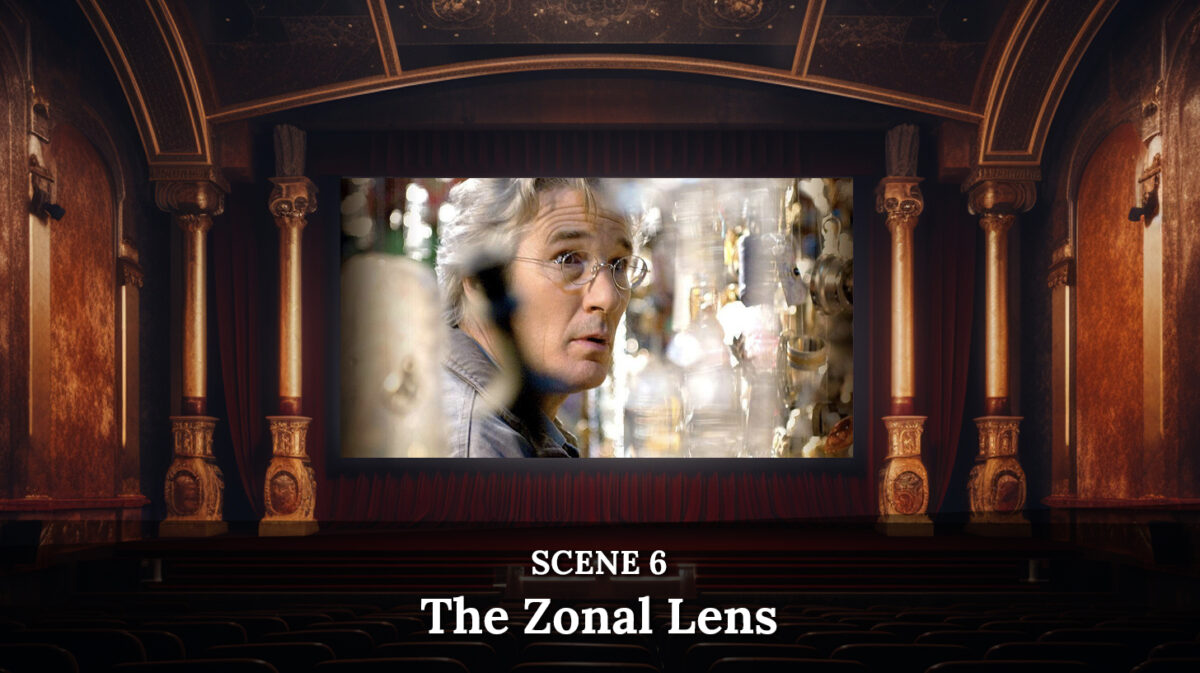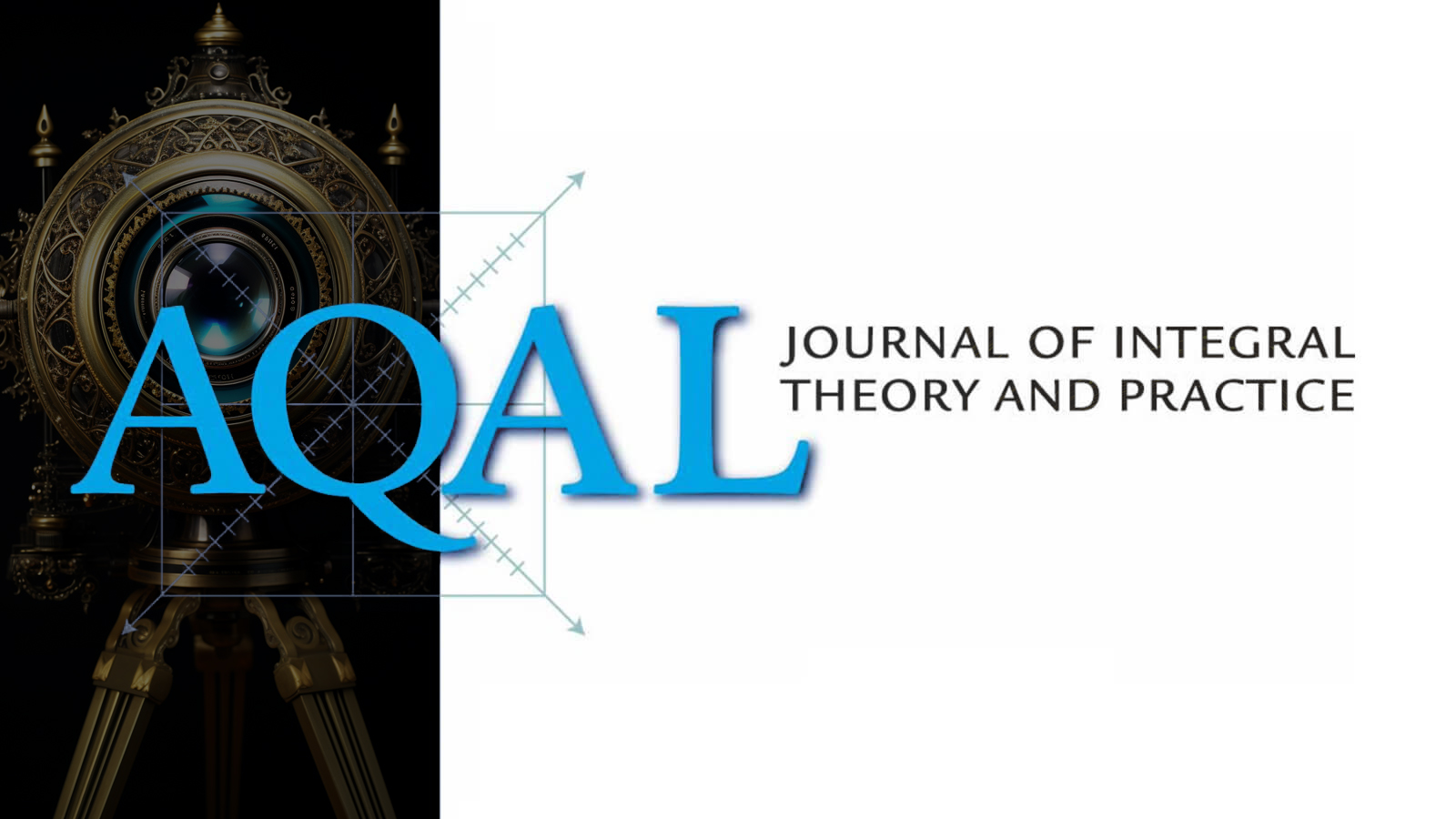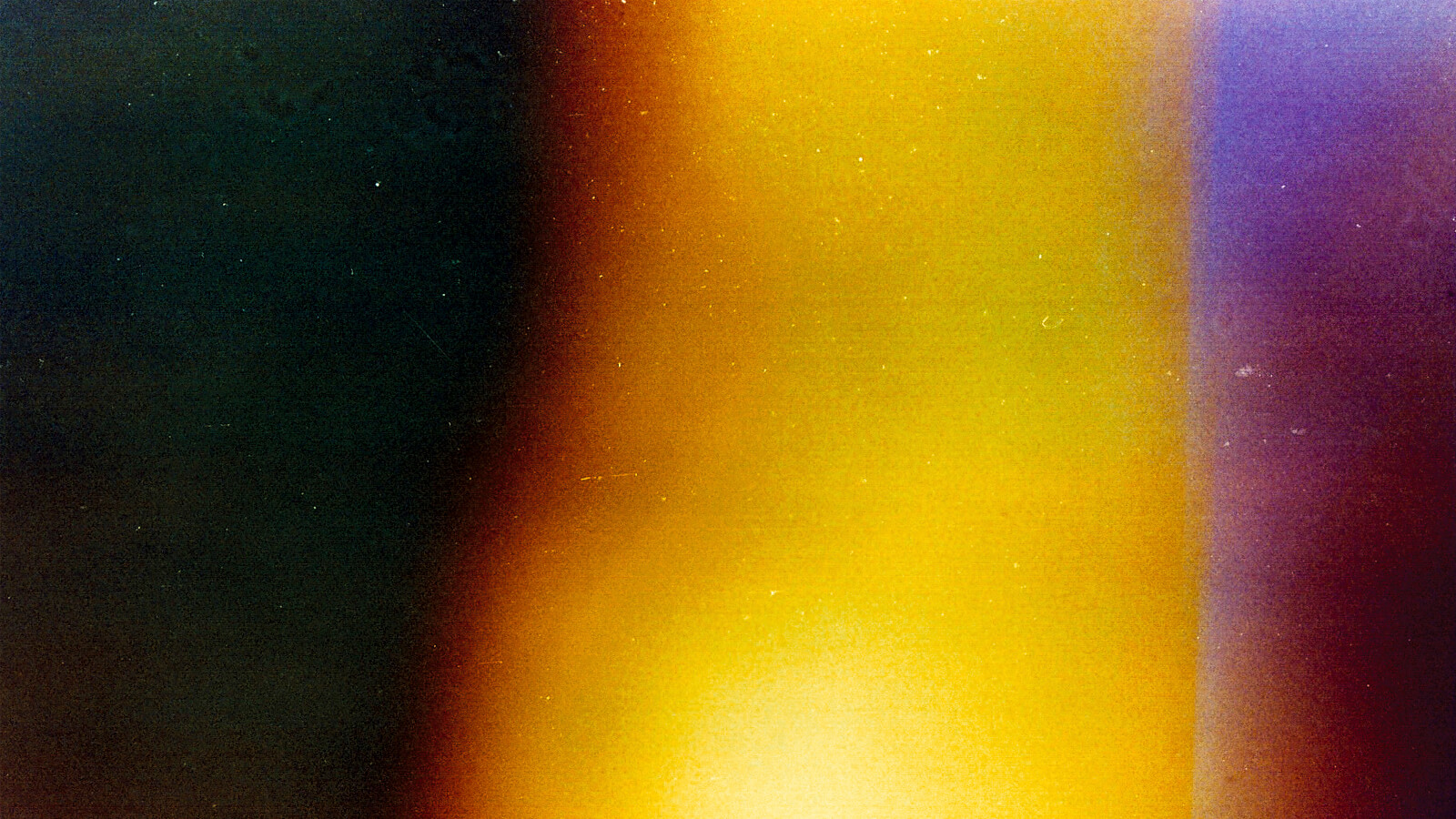
Having previously explored the basic integrally-informed cinematic lenses of perception and expression (the HOLONIC, QUADRATIC, DEVELOPMENTAL, STATES and TYPOLOGICAL Lenses), we are now ready to delve into the more advanced integrally-informed cinematic lenses, starting here with the ZONAL LENS.
The Zonal Lens aids us in applying eight (8) indigenous human perspectives (zones) and their corresponding methodologies for gaining verifiable and reproducible knowledge to the realm of perceivable realities (See Figure 1).
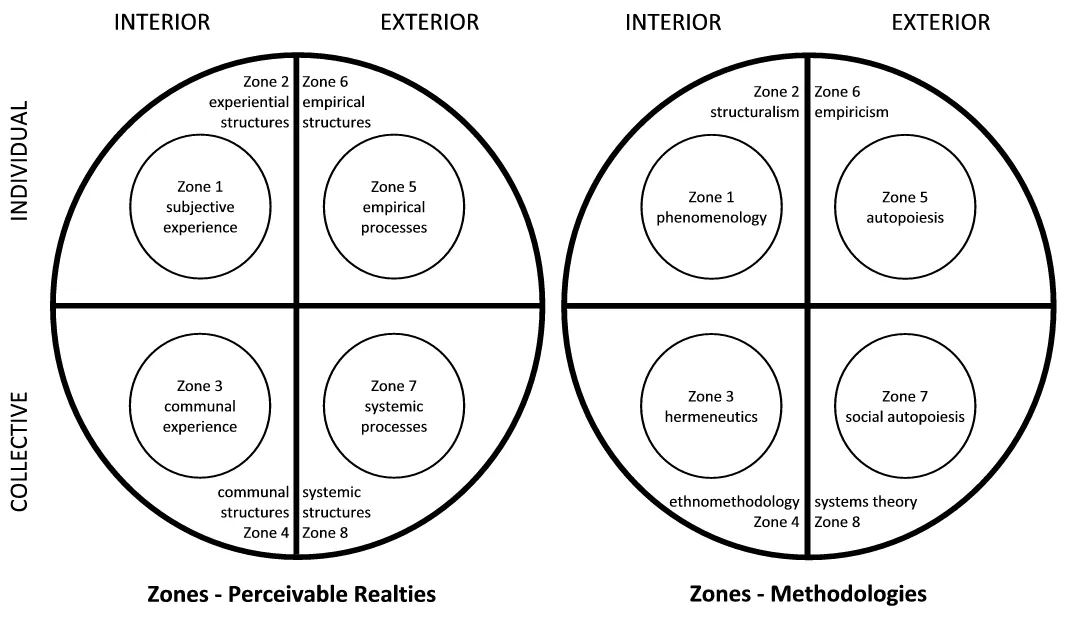
Figure 1
These eight indigenous zonal dimension-perspectives and their corresponding zones of inquiry are derived from the inside (subjective/process) and outside (objective/structure) dimensions of the four Quadrants or the four perceivable realities of first-person experiential (individual-interior), second-person communal (collective-interior), third-person empirical (individual-exterior), and third-person-plural systemic(collective-exterior). While most of the previous lenses we have explored use the four quadrant (four-zone) model as their foundation, this lens marks a shift to an eight-zone quadratic model, in essence doubling the number of dimension-perspectives we have previously been exploring, bringing us to a potentially deeper and more expansive vision.
One way of applying the Zonal Lens to the cinema is to start with the basic four-quadrants of Constructed Cinematic Reality previously discussed:
- TEXT (story, character, premise, theme, etc.)
- IMAGE
- SOUND
- TIME (temporal structures, accumulated patterns of expression, etc.)
From here we can then open up each of these four basic cinematic dimensions to their inside (subjective/process) and outside (objective/structure) dimensions, which correlate to their internal intentional and meaning-making (signification) level and their external observable/perceivable level. This translates into eight zones of Constructed Cinematic Reality (See numbered list and Figure 2 below):
- Textual Signification Patterns (Inside);
- Textual Structures (Outside);
- Auditory Signification Patterns (Inside);
- Auditory Structures (Outside);
- Visual Signification Patterns (Inside);
- Visual Structures (Outside);
- Temporal Signification Patterns (Inside);
- Temporal Structures (Outside)
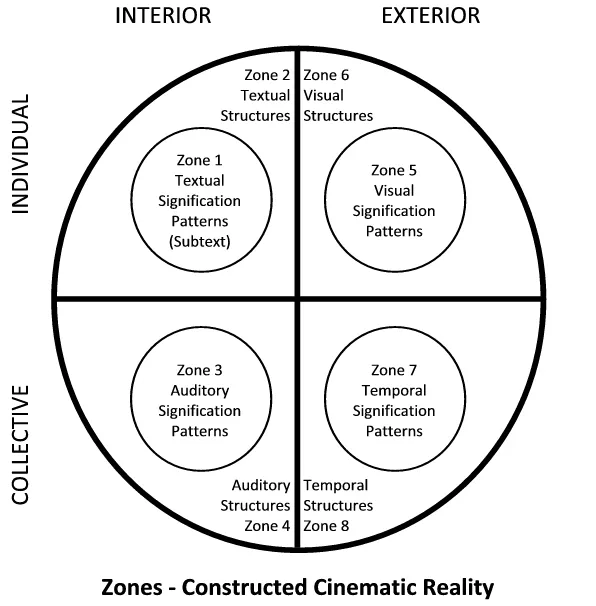
Figure 2
These eight zones of Constructed Cinematic Reality are just the tip of the iceberg because each these zones can manifest in deeper quadratic patterns. For example, in the textual dimension, the outside of the text manifests in all four dimensions of subjective characterization, intersubjective character interactions, objective story events, and interobjective story structures (i.e., sequences, acts, plot points, etc.); and inside these four dimensions of the text, are the parallel subtextual (inside/signification) patterns or the more subtle dimensions of intention and meaning-making processes. These subtextual dimensions are either a deepening of the main text or hidden undercurrents that stand in juxtaposition to the main text. When viewed as a whole we can see that we are essentially dealing with eight zones of textual and subtextual experiential, communal, objective/empirical, and systemic narrative realities (See Figure 3).
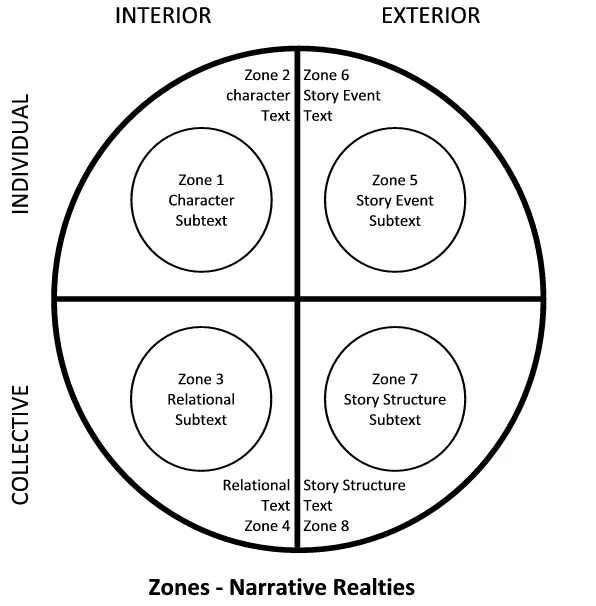
Figure 3
We can equally unpack the dimensions of image, sound and time into these same types of sub-dimensions as well, producing a matrix of the zones and subzones of Constructed Cinematic Reality and Cinematic Expression (See Chart Below)

The full creative use of this multidimensional Zonal Lens array can help the cinematic artist create works that are powerfully immersive, while also giving them the tools to express and capture more profound and subtle dimensions of being and becoming.

Bee Season (2005) and the Cinematic Expression of Inside (Signification) Patterns that Reveal the Main Characters Mystical Relationship to Letters and Words.
In addition to this basic Zonal Lens array, we could unpack each zone and subzone even further into an almost endless well of zonal patterns within patterns. While on the surface this zonal array may appear to be incredibly complex, I believe that once we have the central zonal patterns down they become easier to perceive and apply. So instead of listing more and more layers of zonal patterns or going deeper into theory at this point, I would like to give an example of the central zonal patterns of this basic preliminary matrix in relation to a particular film.
The film I have chosen to explore here is Bee Season (2005), a cinematic work that masterfully uses all of the zones and subzones by giving equal weight to the inside and outside of all four cinematic dimensions of text, image, sound, and time, along with their corresponding subjective, intersubjective, objective, and interobjective sub-dimensions. On the level of the text of this subtle and beautiful little film, the inside (subtextual/meaning level) dimensions of character, character relations, story events, and story structures are given equal and/or greater weight in relation to the outside or surface (textual/structural level) dimensions of the characters and the story; from fragmented memories that cloud the subjective perceptions of characters, to the communal relational effects of unconscious shifts in parental love and attention, to hidden meanings of objects and events, to deep systemic undercurrents pulling the characters through time and space.
SPOILER ALERT: For those who have not yet seen the film Bee Season but intend to do so, the following discussion includes details of the film that could spoil your first-time viewing experience.
To give a sense of how these textual and subtextual (character/story structure and meaning) patterns of the text dimension of cinematic expression play out in Bee Season, from the Zonal Lens perspective, I have put together some of the expressive text elements and their zonal placements to give an example of what we are talking about here (Note: As previously mapped out, the Text has the two major zones of textual (Zone 2: Outside/structure) and subtextual (Zone 1: Inside/meaning); and each of these zones has four subzones – A) subjective, B) intersubjective, C) objective, D) interobjective – producing eight (8) basic layers of text which are indicated below by the major zone number followed by the subzone capital letter; for reference see the Zonal Lens Matrix in the chart above):
- Character = A young girl, Eliza, has a gift for spelling (Zone 2A – Subjective Textual Structure);
- Character Subtext = Eliza’s gift for spelling has mystical underpinnings and her relationship with letters and words becomes a vehicle for her enlightenment and the healing of her family (Zone 1A – Subjective Textual Signification);
- Character Interactions = Eliza’s Interactions with her mother Miriam and her Father Saul (Zone 2B – Intersubjective Textual Structure);
- Relational Subtext = Eliza’s awakening to her gift unleashes her mother’s repressed childhood memories and induces a shift in her father’s obsessive attention away from her brother Aaron and onto herself (Zone 1B – Intersubjective Textual Signification);
- Story Event = Eliza and her brother visit their father at the University and watch him give a lecture on Jewish mysticism (Zone 2C – Objective Textual Structure);
- Story Event Subtext = We are introduced to the Kabbalistic concept of Tikkun Olam, the process of healing the world by putting back together the shattered fragments of Divine light (and love) that are hidden in all aspects of creation. This concept then becomes the subtextual story event pattern for the entire film – from events filled with shattered characters and relationships and fragmented memories and perceptions, to the images and sounds of shattered glass, fragmented reflections, scattered light, and disjointed flashbacks that permeate these events (Zone 1C – Objective Textual Signification);
- Story Structure = The Spelling Bee Season – from the local to the national level (Zone 2D – Interobjective Textual Structure);
- Story Subtext = The series of spelling bees becomes the incremental catalytic process for Eliza’s Awakening to her gift and for the families deconstruction, leading to the families ultimate healing and transformation (Zone 1D – Interobjective Textual Signification).
Building on the above multi-zone textual expression patterns, the creators of Bee Season increase the depth and span of their work by extending these patterns into the visual, auditory, and temporal structures (see above Story Event Subtext section for examples). The foundational zonal pattern we are dealing with here is this duality of inside (signification/meaning) and outside (structure), and how this duality plays out in various other dimensions (text, image, sound, and time; subjective, intersubjective, objective, and interobjective).
In Bee Season we can see this duality pattern being expressed in the images and sounds that are used around letters and words (outside/structure), which become powerful cinematic forces (inside/signification patterns) playing on the main character Eliza that reveal the mystical and spiritual dimensions of the her gift with spelling (see Figure 1). We also see this duality of structure and meaning in the visual and auditory elements used to capture the interactions of the characters. In Figure 2 we see a simple medium shot of the mother, father, and brother of Eliza (outside/structure) that uses the visual and auditory orientation and directional elements of the characters and their interactions (body orientation; direction of attention/avoidance; etc.) to give us a felt sense of the subtle communal effects of unconscious shifts in parental love and attention (inside/signification).
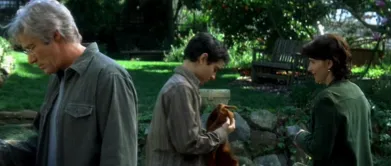
Bee Season (2005) and the Textual, Visual and Auditory Signification (Inside/Meaning) Patterns that Reveal the Communal Effects of Unconscious Shifts in Parental Love and Attention….
In the temporal dimension, this duality of meaning and structure can be seen in the interplay between the mother’s everyday temporal reality and her inner fragmented-memory flashback reality. The juxtaposition of these two temporal structures (outside), present and past, reveal hidden (inside/signification) meaning patterns that connect these two dimensions; including the mother’s mentally destabilizing yet beautifully poetic effort to put together fragmented elements of her present reality to replace and push back the shattered fragments of her repressed memories (see image below).

Bee Season (2005) and Inside/Signification Patterns of the Mother’s Relationship with her Daughter and her Own Traumatic Childhood Memories Revealed through the Juxtaposition of the Temporal Cinematic Structures (Outside) of Past and Present
The use of musical expressive elements (outside/structure) as an emotional signifier (inside) is profoundly present in this film as well. As the young girl, Eliza, finds and uses her gifts as a speller and a letter-word mystic, her mother’s repressed childhood memories surface and her inner and outer life begin to fall apart, starting with the gift of a Kaleidoscope passed down from Mother to Daughter (see Figure 3). Mother and daughter have very similar musical themes that arise as we glimpse their inner realities which make us feel the inner connection between them; at the same time, the mother’s theme musically expresses a world falling apart, while the daughter’s theme expresses the coming together of these same musical and inner forces. In the end, the musical theme’s merge and the daughter’s theme takes on new dimensions and spreads to the whole family, producing a deep and profound sense of healing and wholeness when this musical expression is combined with the other textual, visual, auditory, and temporal expressive patterns of the final sequence (see image below).
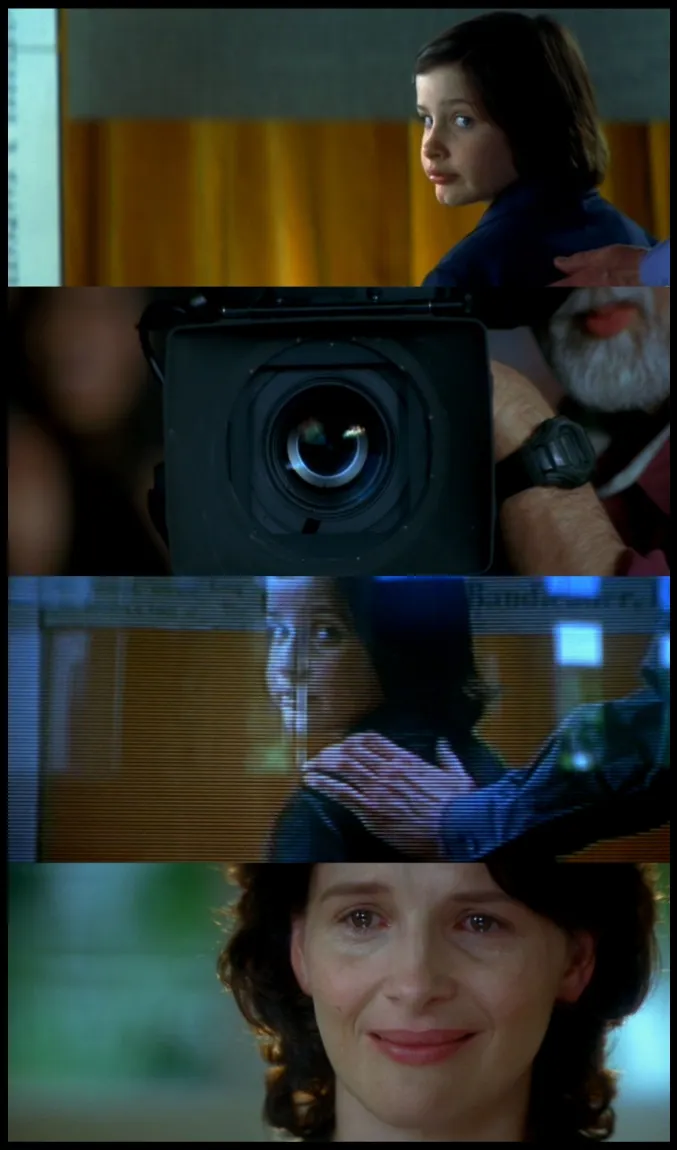
Bee Season (2005) and the Healing of the Mother-Daughter Relationship Expressed Across and Through Text, Image, Sound and Time
As Bee Season beautifully illustrates, when all of these zonal dimensions combine in a concerted expressive effort, a very subtle and deep level of expression and immersion can be achieved. While all the basic integrally-informed lenses of cinematic expression and perception offer cinematic artists the capacity to create more immerse works, the more advanced Zonal Lens could potentially offer them the tools to express and capture even more profound and subtle dimensions of being and becoming. For us as audience members, I have found that developing an understanding of these Zonal Lens patterns and attempting to observe them in cinematic works can become a profound and meaningful meditation practice in and of itself, helping us to become more present to these dimensions in our own lives.
 |
|
 |
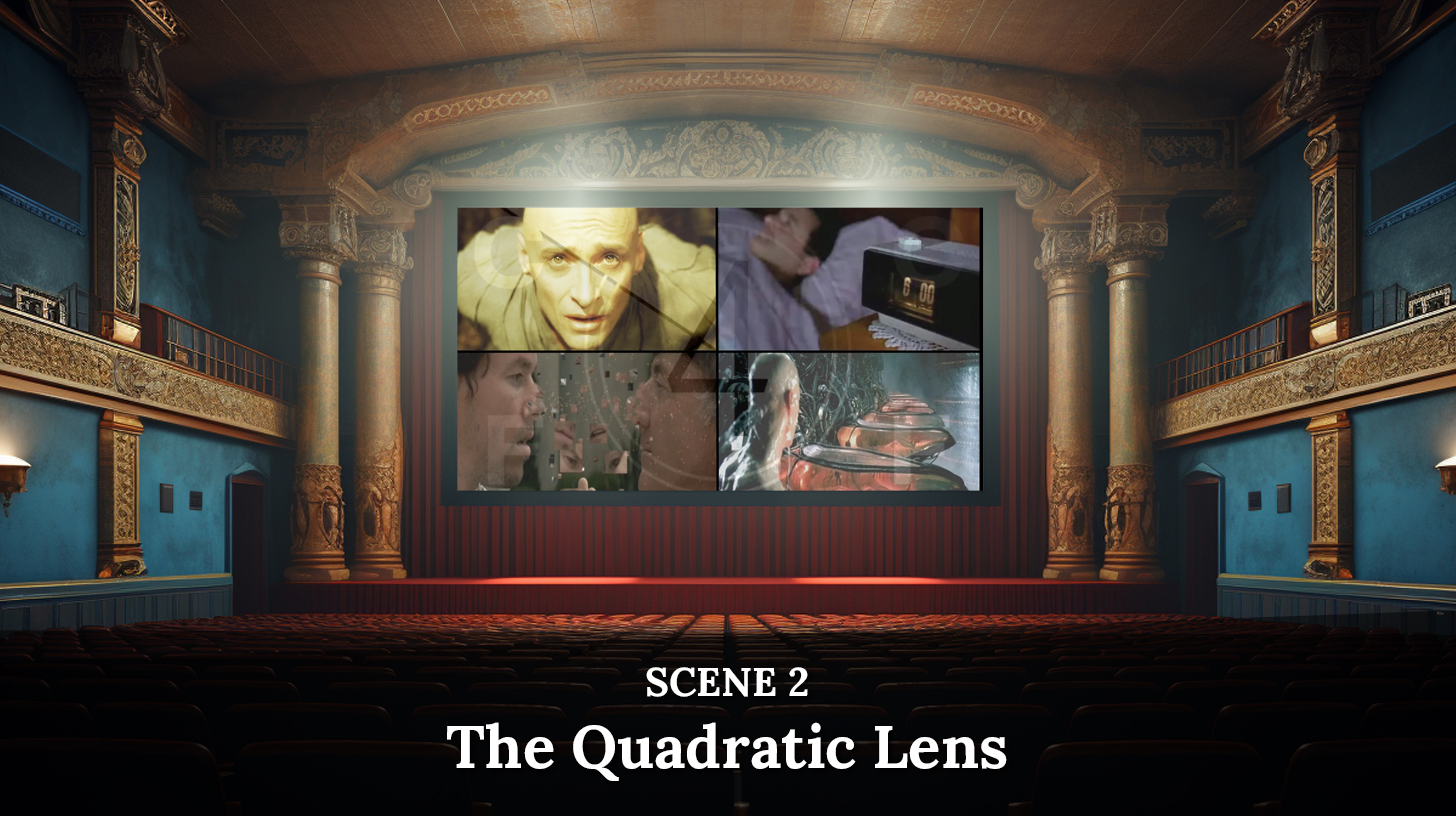 |
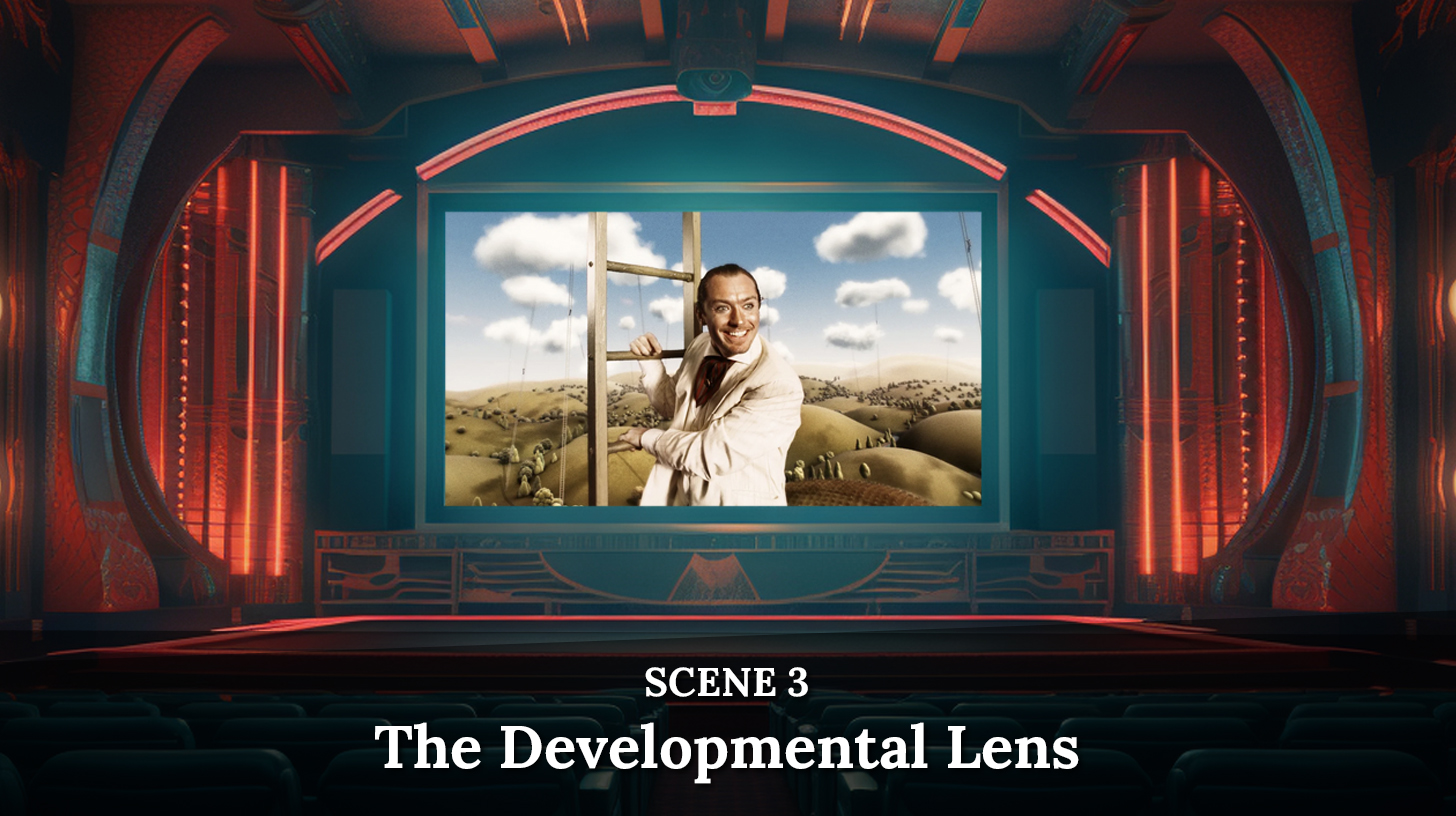 |
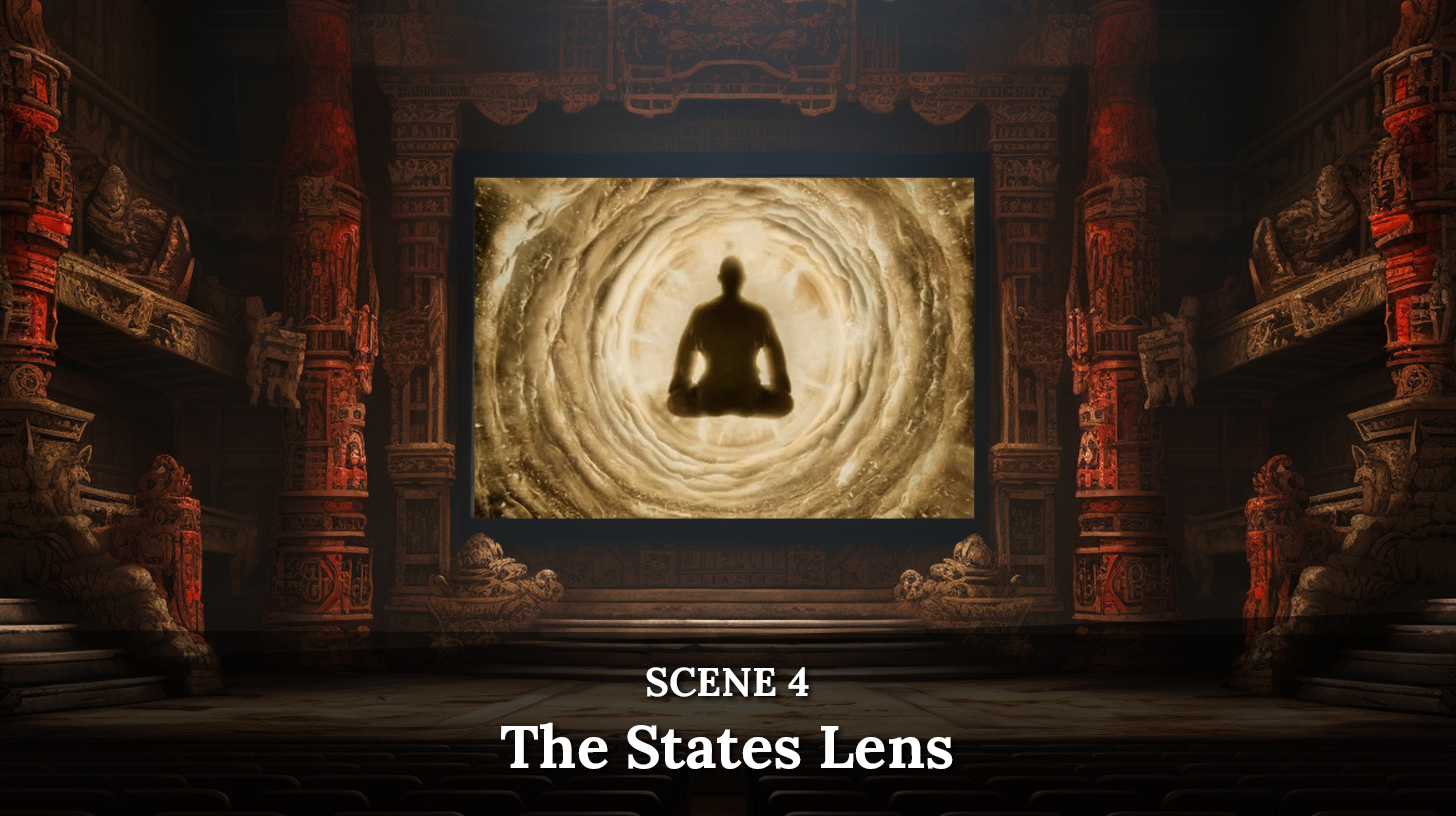 |
 |
 |
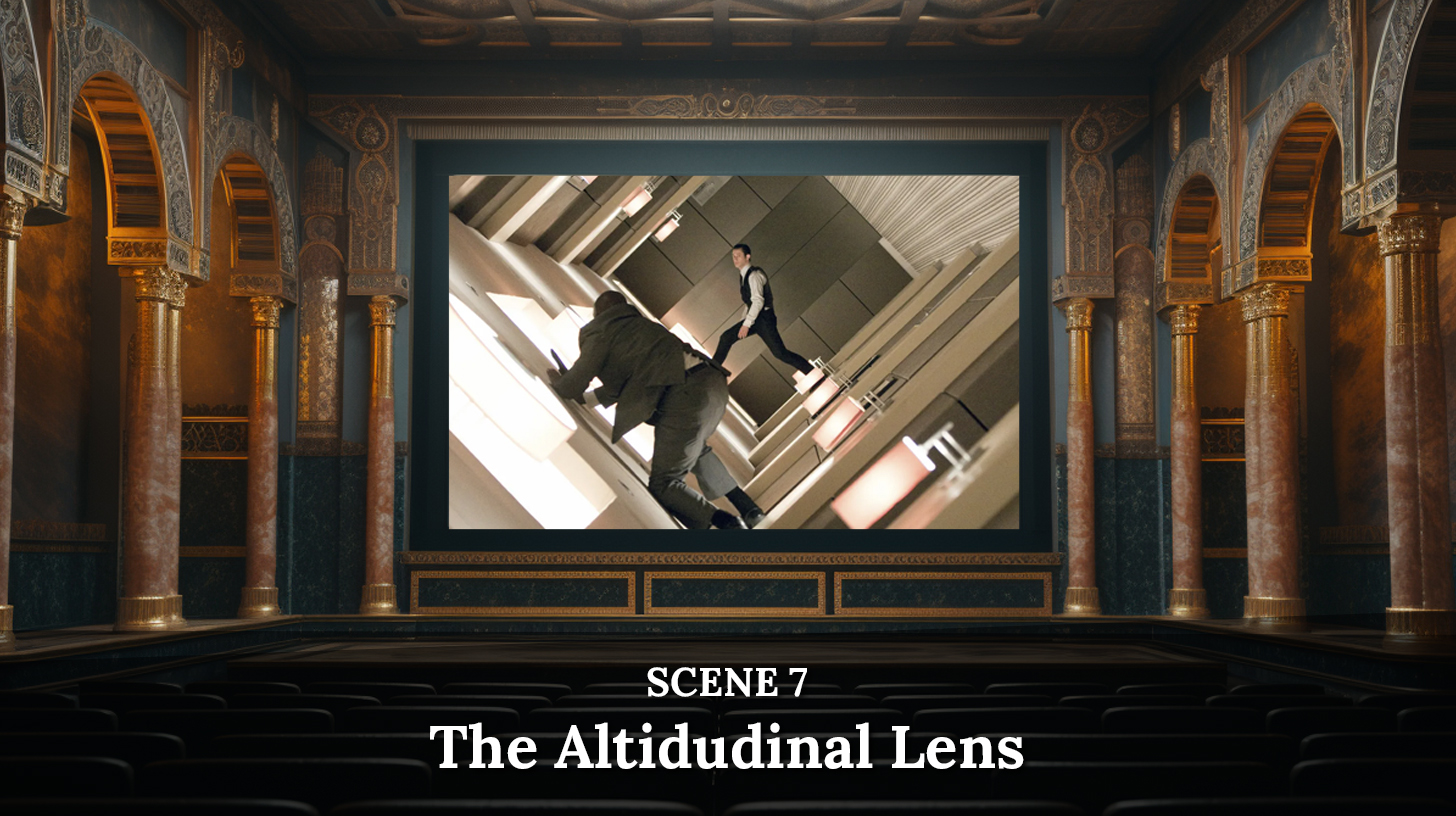 |
 |
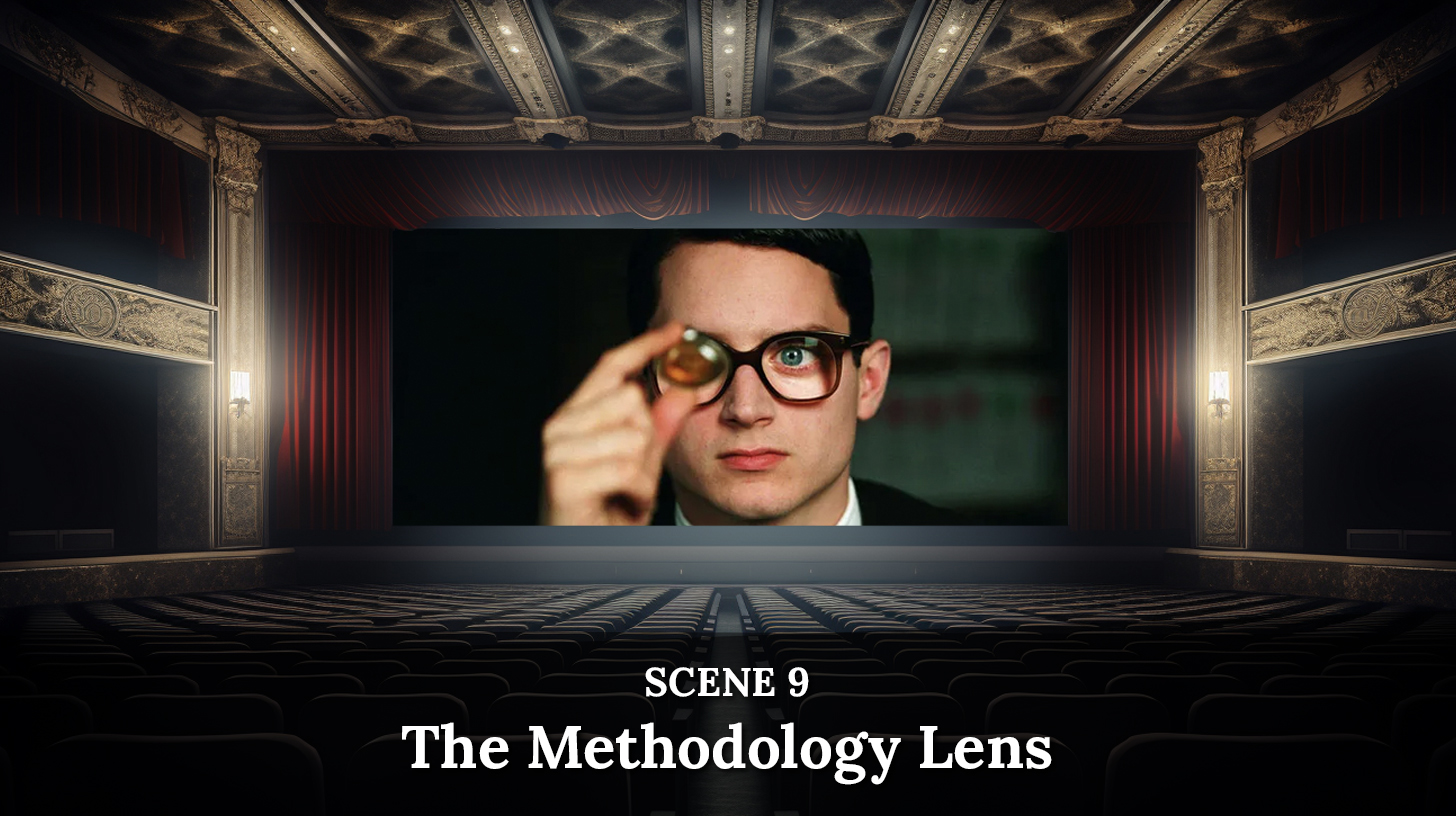 |
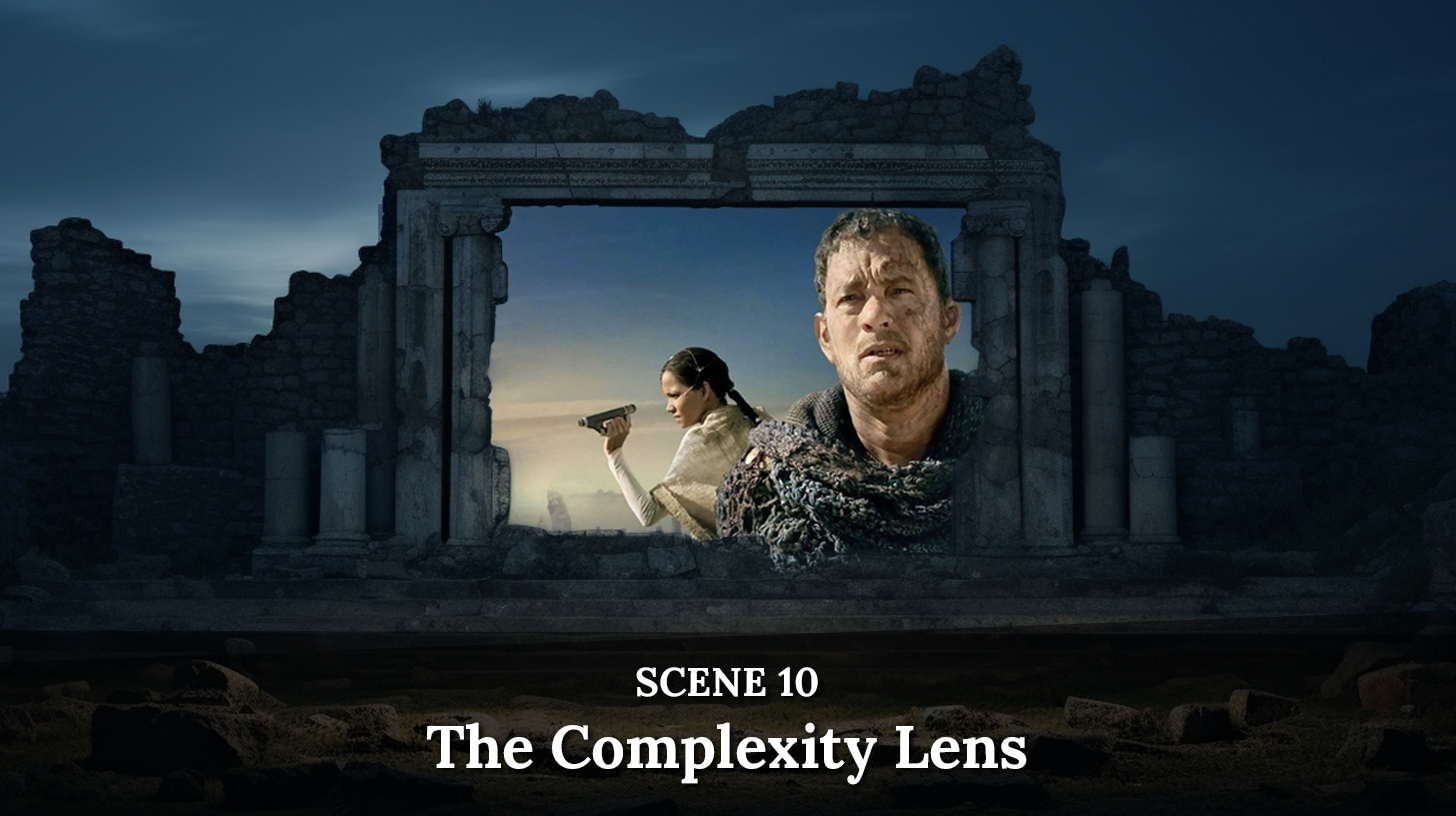 |
 |
|
Related Media
Toward an Integral Cinema
Mark Allan Kaplan
Defining characteristics of what may constitute an integral cinematic work are mapped out and developed into a set of evaluation criteria using the works of Dulac, Gebser, and Wilber. A test of these evaluation criteria with the viewing of several motion pictures is summarized; the results suggest that several past and recent films demonstrate qualities that could be said to constitute an integral cinematic work.
Integral Cinema Studio: A Comprehensive Guide to the Cinematic Experience
Mark Allan Kaplan and Ken Wilber
Mark Allan Kaplan has been curating a groundbreaking integral project, something he calls the Integral Cinema Studio. In this remarkable exploration, Mark and Ken walk us through all of the main elements of Integral theory, using some of our favorite movies to illustrate the basics of the Integral approach while noting how each of these elements has shaped the cinema experience since the invention of film itself.
About Mark Kaplan
Mark Allan Kaplan, Ph.D. is a Transdisciplinary Artist, Filmmaker, Researcher, Consultant, Educator and Media Psychologist focusing on Integral, Transpersonal, and Transformative approaches to Art, Media, and Spirituality. Mark is currently exploring various applications of Integral Theory, including the research and development of an Integral approach to cinematic media theory and practice.

